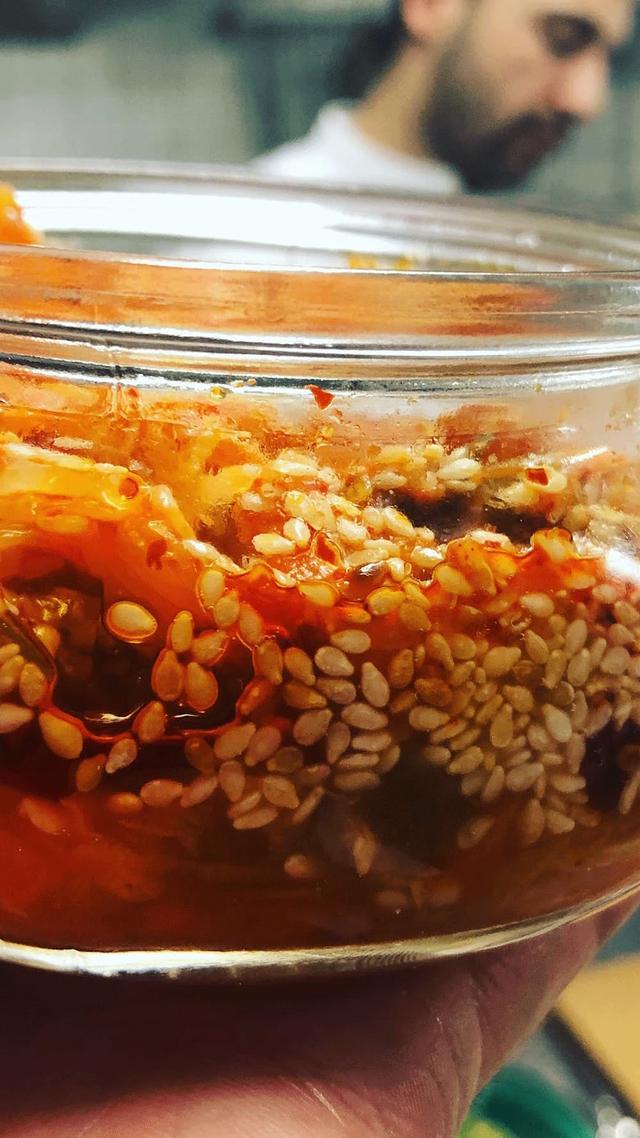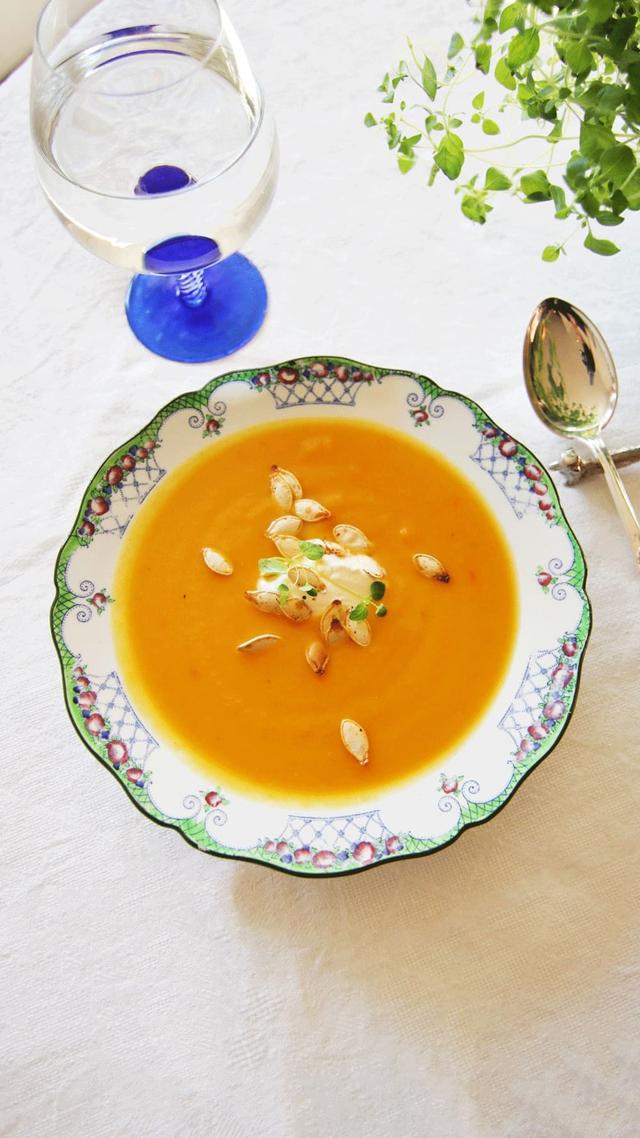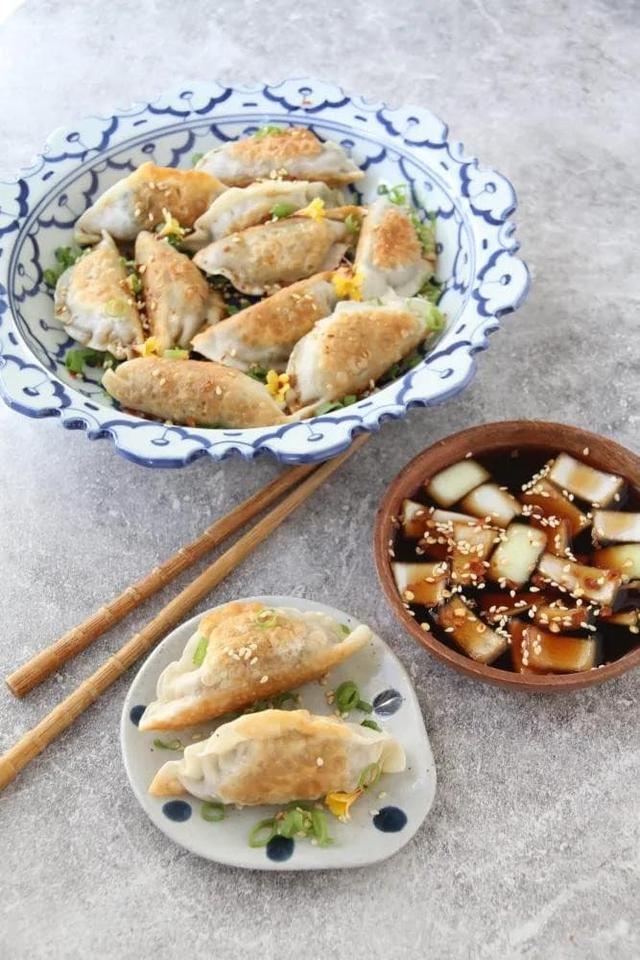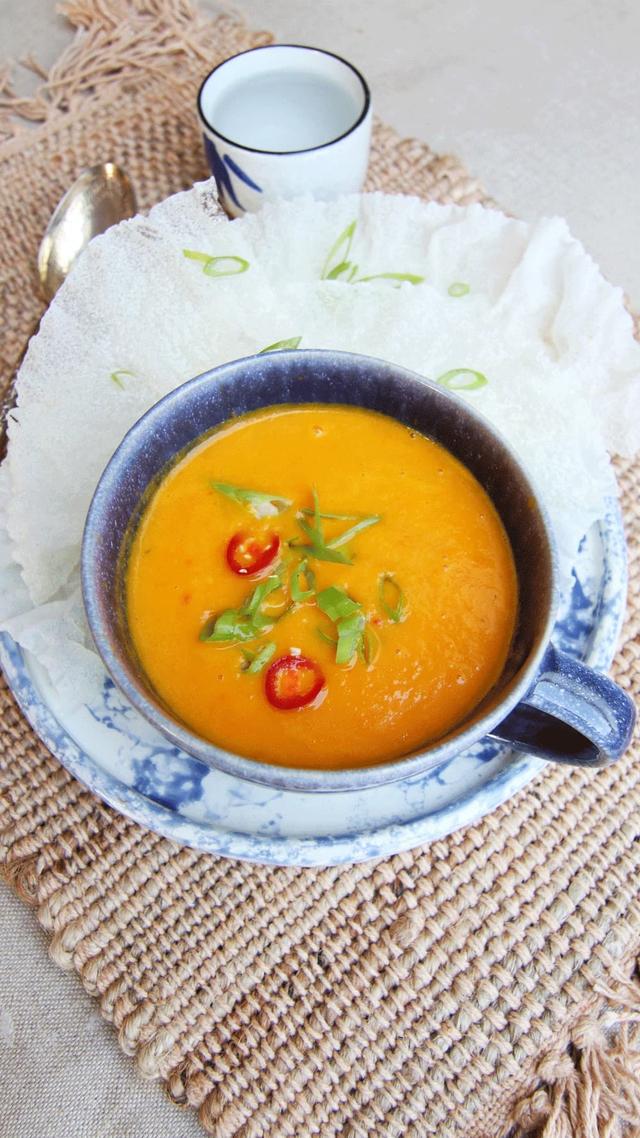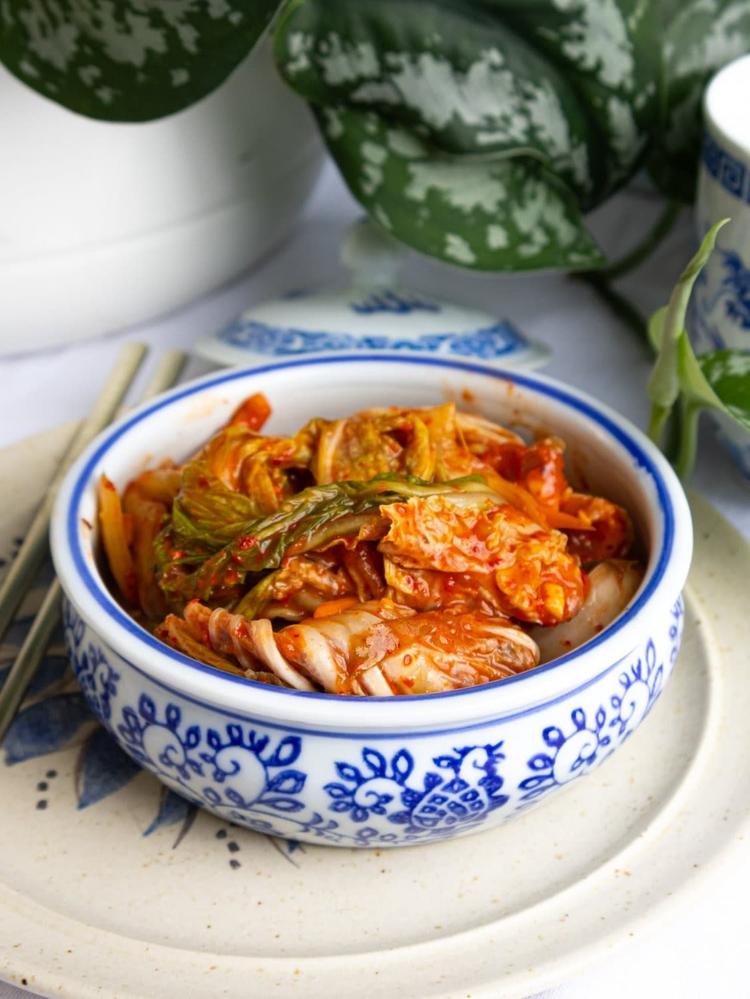
This recipe is inspired by the famous Maangchi and is a traditional Korean kimchi made with Napa cabbage, also known as tongbaechu-kimchi. One portion yields approximately 2 two-liter Norwegian glass jars of kimchi. This is a fantastic side dish that we enjoy as often as we can at home. If you search for kimchi here on Sulten, you'll find several dishes where kimchi is an ingredient.
Ingredients
- 2 x napa cabbage
- 1 dl salt
- 5 dl water
- 2 tbsp rice flour
- 2 tbsp brown sugar
- 1 x daikon radish
- 2 x carrot
- 6 x asian chives
- 10 clove garlic
- 2 thumb ginger
- 1 x yellow onion
- 1 dl fish sauce
- 2 tbsp korean shrimp paste
- 2 dl korean chili powder
Method
- Make a 3 cm cut into the bottom of each Napa cabbage head and gently tear the cabbage in half. Make another cut into the bottom of the two halves and tear them into quarters, giving you a total of 4 pieces.
- Rinse the cabbage thoroughly with cold water.
- Place a large clean bowl to the counter. Salt the cabbage on all leaves near the stem. Set aside for 30 minutes. Turn the cabbage every 30 minutes to distribute the salt evenly.
- To a saucepan with a thick bottom, combine water and rice flour. Combine and let it simmer for 9 minutes. Stir frequently. Add brown sugar and stir until dissolved. Set aside to cool.
- Just a reminder to turn the cabbage again after 30 minutes. The salt will cause the cabbage to release water and become softer.
- Wash and peel the daikon radish. Cut it into thin slices and then cut the slices into 2-3 mm thin sticks.
- Peel the carrots and chop them into 2-3 mm thin sticks.
- Chop the Asian chives into small strips. If you don't have Asian chives, you can use regular spring onions.
- Make a paste with garlic, fresh ginger, and onion. Cut them into pieces and place them in a food processor. Blend until you get a smooth mixture.
- To the food processor, add the rice flour mixture, fish sauce, shrimp paste, and Korean chili powder. Mix well.
- Turn the cabbage again and make sure there is salted water in all nooks and crannies. And make sure the cabbage has soaked in the salt for about 2 hours in total.
- Rinse the cabbage thoroughly under running cold water. Do this 2-3 times. Feel free to cut the cabbage into slightly thinner strips as you do this. Place the cabbage on a rack to drain before proceeding to the next step.
- To a large bowl, mix together the kimchi paste, daikon radish, carrots, and Asian chives.
- In South Korea, it's common for moms not to use gloves when mixing the kimchi mixture with the cabbage. In their eyes, this adds extra love and flavor through personal bacteria for fermentation.
- Cut off the white stems from the cabbage.
- Use the large bowl from which you used to salt the cabbage. Place the kimchi sauce in between the leaves of the cabbage using your fingers. Fold the cabbage together and place it in a clean glass or plastic container for fermentation. Press the kimchi down with your hands to reduce the air between the leaves.
- Note: Set aside some kimchi and shred the leaves into thin strips. Roast some sesame seeds and sprinkle them on top. Serve this with hot rice. Fresh kimchi salad tastes absolutely fantastic.
- If you made this with 1 portion and 2 containers for fermentation, you can leave one on the counter and the other in the refrigerator. Note the date on the one you put in the fridge and take it out for fermentation at a later time. This way, you'll have kimchi that "lasts" longer. Remember that the liquid in the container should always cover the cabbage.
- After 36 hours at room temperature, fermentation has begun. You will see bubbles in the sauce when you press on the cabbage with a spoon. Place it in the refrigerator and make sure the cabbage is covered with sauce at all times. You can wait up to 21 days to eat it, but try it after a few days to see how it tastes.
- Tip 1: Set a timer to control the fermentation time. There are several apps that effectively time the process. I use an app called "Tidtaker," where you can set the time for both glass 1 and glass 2.
- Tip 2: You can use scissors to cut the kimchi before serving it, making the pieces mouth size.
- Tip 3: Fill a small jar with kimchi and label it with the date. Kimchi makes the perfect gift!
- Note: Send me pictures and ask me any question at @mammapiia at Instagram! I would love to see the result if you make this recipe!

